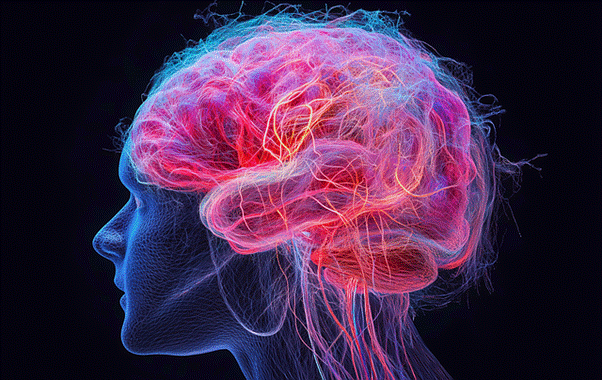The human brain is often described as the most sophisticated organ in existence, responsible for thought, memory, emotions, and actions. At the core of this complexity lies neuron activity, the fundamental process that allows brain cells to communicate with one another. Every decision you make, every movement you perform, and every emotion you feel can be traced back to the electrical and chemical signals generated by neurons. By studying neuron activity, scientists can better understand how the brain functions and how disruptions in this process may lead to neurological disorders.

The Basics of Neurons
To appreciate neuron activity, it is essential to first understand what neurons are. Neurons are specialized cells in the nervous system that transmit information through electrical impulses and chemical messengers. Each neuron is composed of three main parts: dendrites, which receive signals; the cell body, which processes information; and the axon, which sends signals to other neurons. When combined, billions of these cells form an intricate network that powers the human mind.
How Neuron Activity Works
Neuron activity begins when a neuron receives input from another cell or from the environment. This input triggers an electrical signal known as an action potential, which travels down the axon. When the signal reaches the axon terminal, it releases neurotransmitters chemical messengers that cross the synapse, or gap, between neurons. These neurotransmitters then bind to receptors on neighboring neurons, continuing the communication process. This rapid exchange of signals is what enables thought, sensation, and movement.
The Role of Neuron Activity in Sensation
Our ability to see, hear, touch, taste, and smell relies heavily on neuron activity. Sensory neurons are designed to respond to external stimuli. For example, light entering the eye activates photoreceptor cells, which convert the light into electrical signals. These signals travel through visual pathways to the brain, where they are interpreted as images. Similarly, auditory neurons respond to sound vibrations, while olfactory neurons detect chemical molecules in the air. The efficiency of neuron activity ensures that we perceive the world in real time.
Neuron Activity and Learning
Learning and memory depend on the adaptability of neuron activity. Through a process called synaptic plasticity, connections between neurons strengthen or weaken based on experience. When you practice a skill repeatedly, the neurons involved in that task fire more efficiently, creating a long-term memory. This principle is why repetition is key in education and skill development. On the other hand, impaired neuron activity can lead to learning difficulties or memory loss, as seen in conditions like dementia and Alzheimer’s disease.
Emotions and Neuron Activity
Emotions are deeply connected to neuron activity within the brain’s limbic system. The amygdala, hippocampus, and prefrontal cortex interact through complex circuits that regulate how we respond to fear, joy, sadness, or anger. When neurotransmitters like dopamine and serotonin are released, they influence mood and motivation. For example, increased dopamine activity is linked to pleasure and reward, while low serotonin levels are often associated with depression. Understanding emotional neuron activity not only explains human behavior but also supports the development of treatments for mental health disorders.
Neuron Activity in Decision-Making
Decision-making involves multiple layers of neuron activity. The prefrontal cortex, responsible for higher-order thinking, integrates information from memory and emotional circuits to evaluate choices. This collaborative process between neurons enables humans to plan, predict outcomes, and make reasoned decisions. Disruptions in these circuits may result in impulsive behavior, addiction, or difficulty in judgment. By analyzing neuron activity, scientists hope to uncover better methods for improving focus, self-control, and cognitive performance.
Disorders Linked to Neuron Activity
Abnormal neuron activity is associated with numerous neurological and psychiatric disorders. Epilepsy, for instance, occurs when neurons fire uncontrollably, leading to seizures. In Parkinson’s disease, reduced activity in motor-related neurons results in tremors and impaired movement. Disorders such as schizophrenia and bipolar disorder are also believed to involve irregular neural signaling. Advances in medical research have shown that treatments targeting neuron communication such as medication or deep brain stimulation can significantly improve quality of life for patients.

Technology for Studying Neuron Activity
Modern technology has revolutionized the study of neuron activity. Techniques such as functional MRI (fMRI), electroencephalography (EEG), and magnetoencephalography (MEG) allow scientists to monitor brain signals in real time. Cutting-edge tools like optogenetics even enable researchers to control specific neurons with light. These technologies provide detailed insights into how neuron activity underlies behavior, cognition, and disease. The ability to observe and manipulate these processes opens the door to breakthroughs in neuroscience, mental health, and artificial intelligence.
The Future of Neuron Activity Research
The future of neuron activity research holds incredible promise. Scientists are working toward creating complete brain maps that detail every neural connection, a project often referred to as the “connectome.” Such advancements could help decode the mysteries of consciousness, intelligence, and creativity. Additionally, understanding neuron activity may lead to more effective brain-computer interfaces, allowing individuals with disabilities to control devices using thought alone. The ongoing exploration of these pathways represents one of the most exciting frontiers in science.
Conclusion
In conclusion, neuron activity is the foundation of human thought, behavior, and emotion. By transmitting signals across intricate networks, neurons enable us to sense, learn, feel, and make decisions. Disruptions in these processes can lead to serious disorders, but modern research and technology continue to provide solutions and hope. As scientists deepen their understanding of neuron activity, they not only unlock the secrets of the brain but also open new possibilities for medicine, technology, and human advancement. The study of these dynamic processes reminds us that every aspect of life, from the simplest reflex to the most profound idea, begins with the firing of a single neuron.